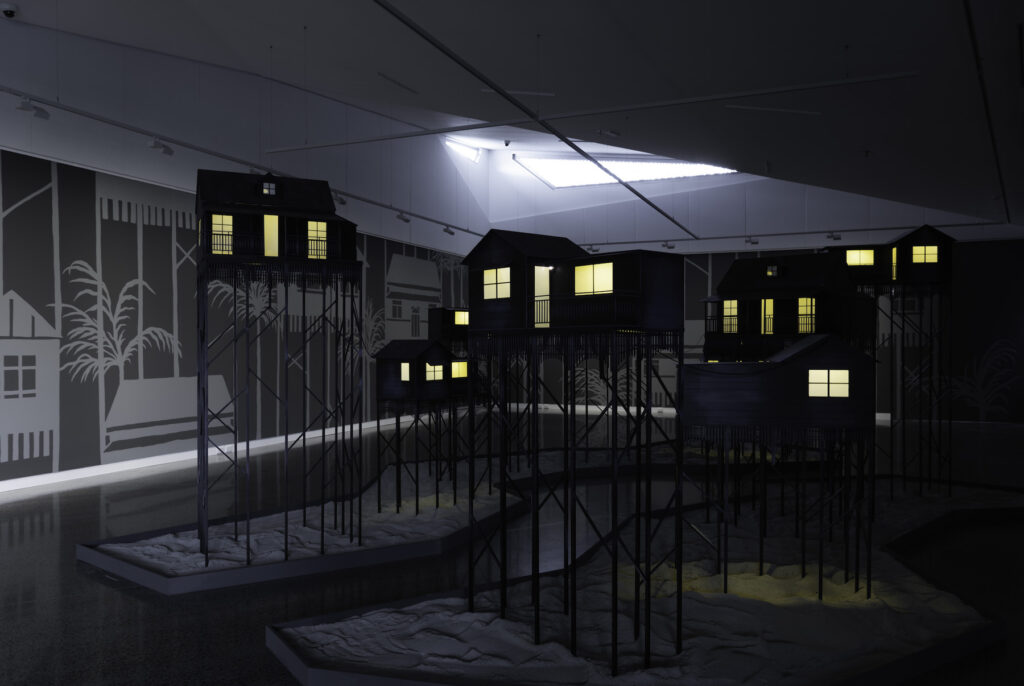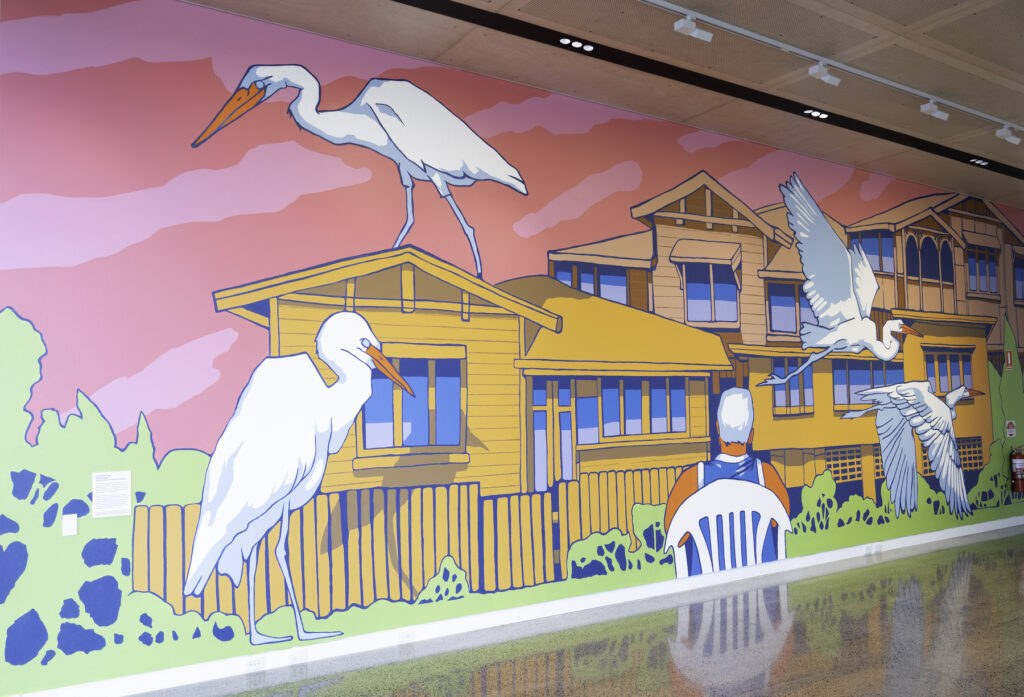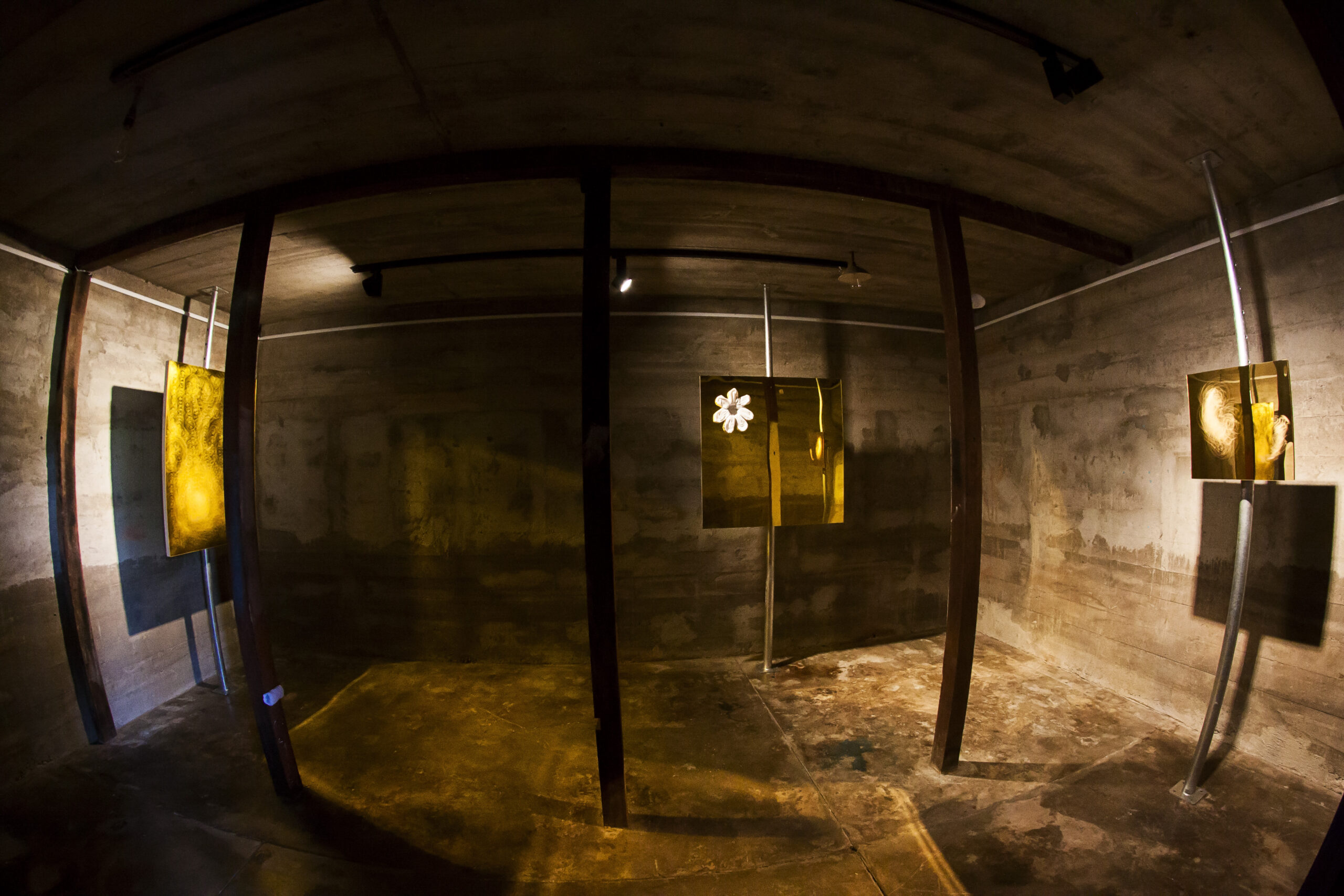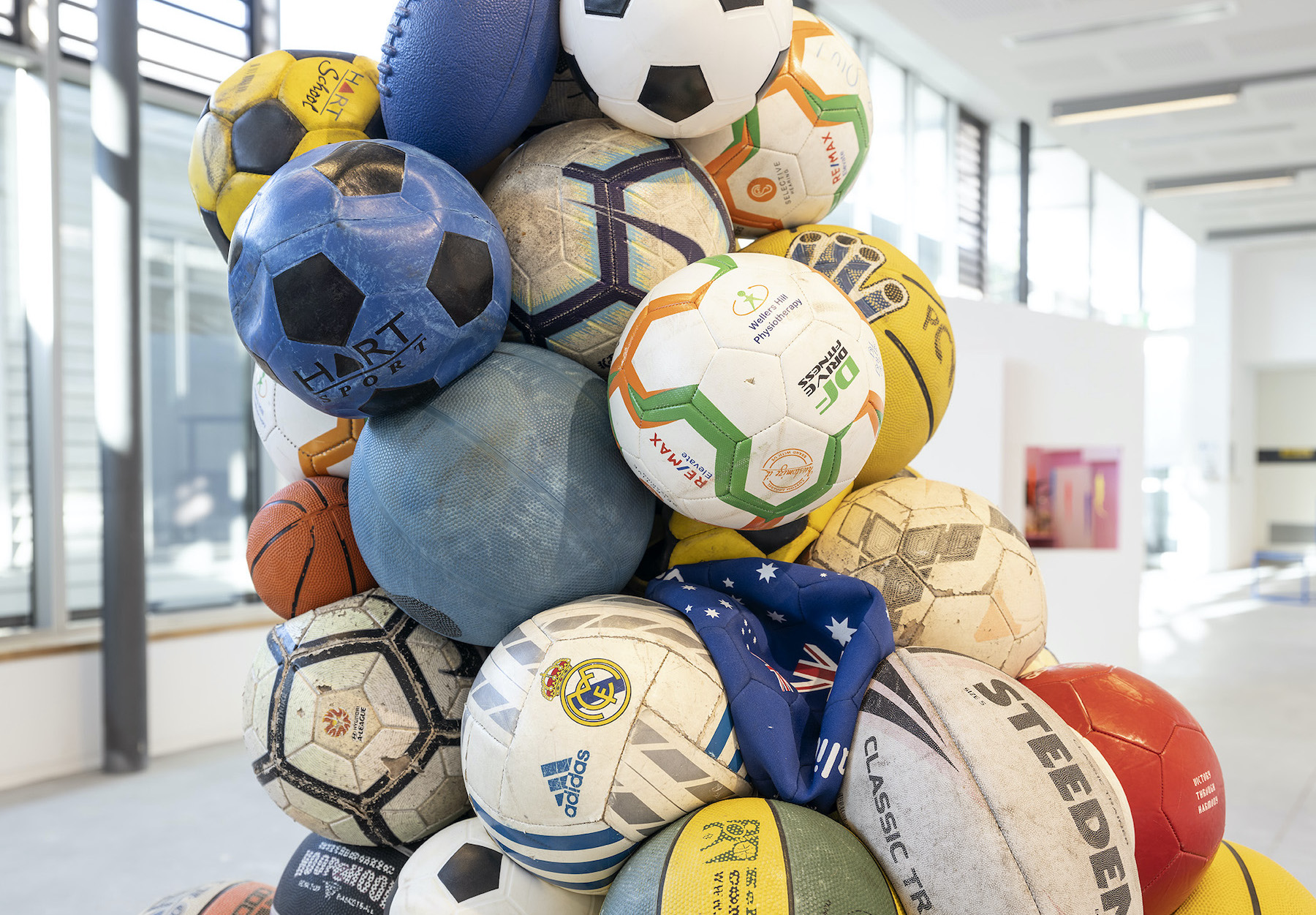
Anybody who likes to keep tabs on the artistic direction of regional galleries has probably noticed the recent programming at Hervey Bay Regional Gallery, which has been bringing a series of intelligent, accessible, and ambitious exhibitions to its community. The latest of these, ‘Burbs to the Bay, features the work of Phoebe Paradise, and embodies a moment in time where the gallery seems to be pivoting from what we have come to expect from regional galleries toward more aspirational content, vindicating investment into fresh ideas and people, and fending off the drudgery and stagnation that can creep into council-run galleries like dry rot.
Paradise is an ideal choice for such a show. While the artist has been doing great things around the Brisbane traps for a number of years through the music and comic scenes, her own label, and pop-up shops and a few public art projects, the gallery scene is a relatively recent addition to her resume. This scene benefits from her can-do poptimism and finely-honed instinct for eye-catching graphics. Comprising two recent bodies of work (Foundation (2023) and Portrait of a House (2022)), and a site-specific mural (The Hunters, 2024, executed with Halle Bryant and Matthew Graveson), the exhibition is impressive in its scope and execution. Few emerging artists would aim so high, but this demonstrates the artist’s versatility, breaking down a fairly complex project into its component parts and making it work, refined over a decade of running a business. Perhaps this owes as much to the artist’s discipline as instinct, and Foundation in particular benefits from its reimagining at Hervey Bay where the gallery’s lighting permanently bathes the piece in a nocturnal blue while the work’s doors and windows are lit a warm, domestic yellow from within. Granted, it is not quite the same as a previous iteration of the work, without pond water beneath, but the installation itself sings, free for the moment from Brisbane’s punishing daylight.
Originally created as a site-specific installation in the ponds of Brisbane’s City Botanic Gardens, Foundation is a commentary on our increasingly fluctuating environmental stability, inspired by the 2022 Brisbane floods and, of course, the curious-yet-practical and very Queensland tradition of building houses on stilts. In this writer’s opinion, the Brisbane City Council has missed a public art acquisition of a lifetime, but given that the city has just experienced its third ‘once in a lifetime’ flood in eleven years, maybe this isn’t all that surprising. Before moving on, it must be noted how exciting it is to see some honest-to-goodness sculpture in a gallery. No formless blobs of air dry ceramic with glitter dumped on them, no gaffa-taped bananas, but goddamn metal, and fabrication, actual design and engineering. It’s an exciting thing and all too rare.

The Hunters explores the artist’s enduring fascination with suburban Queensland in a commissioned mural for the gallery foyer. It is worth noting that there has been a huge shift generationally, at least in Australia, on the way the suburbs are understood and depicted. In the music, art, and cinema of Gen X, the suburbs were something to escape, to strive and sneer against, a kind of life sentence that meant children, BBQs, and a nine-to-five job. To Millennials and Gen Z, the suburbs are a lost Arcadia, a heritage-coloured dream no longer available, banished alongside steady employment and affordable housing. It is in this version of the suburbs, part fantasy and part memory, that The Hunters exists. We are the dude in the plastic chair, gazing back at the birds and the pink dusk, houses piled atop one another.
I am reminded of David Malouf’s description of how the geography of Brisbane dictates the way suburbs are established, and by extension, its effect on the imagination of its denizens:
Wherever the eye turns here it learns restlessness, and variety and possibility, as the body learns effort. Brisbane is a city that tires the legs and demands a certain sort of breath. It is not a city . . . that provokes contemplation, in which the mind moves out and loses itself in space. What it might provoke is drama and a kind of intellectual play, a delight in new and shifting views, and this because each new vista as it presents itself here is so intensely colourful.1
Malouf could be describing Paradise’s work as much as his hometown.

While followers of the artist’s work might consider Foundation and The Hunters on the quiet side in terms of palette, Portrait of a House will return them to her wheelhouse, comprising several digital drawings of various suburban houses at different times of day. There is a startling sense of recognition in these pieces, especially the nocturnal scenes, which like Foundation, glow from within. Perhaps it is just the pining of a traditionalist, but it is in this series that I find myself looking for, wishing for, more evidence of the artist herself which is, in comparison with the Foundation and The Hunters, somewhat absent. But this is a minor quibble from somebody with only the most tenuous of grips on Photoshop and InDesign. No doubt Paradise’s drawings speak to a generation who see working without a ‘back’ button as an antiquated form of artistic self-flagellation. And, really, this is the point, in that ‘Burbs to the Bay as an exhibition is a statement of intent for Hervey Bay Regional Gallery, as much as for the artist. And a very good one at that. It is also a reminder that we have some very promising artists coming up, despite a pretty thorny and desolate landscape to navigate, and that these artists are absolutely worth supporting in any way possible.
- David Malouf, “A First Place,” in A First Place, Sydney: Knopf, 2014, 5-6. ↩︎
Jonathan McBurnie is an artist and writer, and is the Director of Rockhampton Museum of Art. Jonathan lives and works on beautiful Darumbal country.



